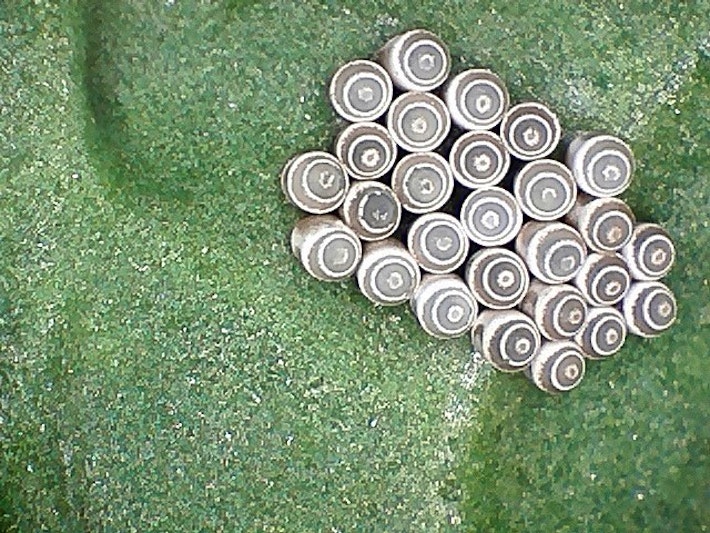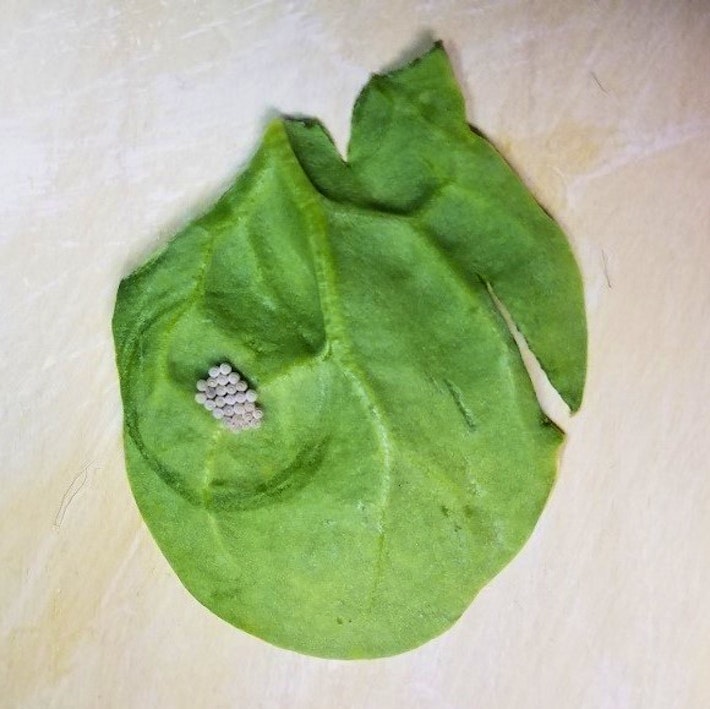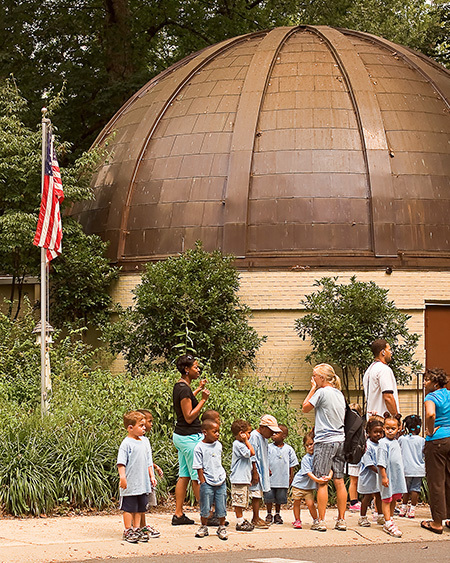Nature Pavilion
Walk among native plants
Proceed to the next screen to select your date and entry time
General Admission | ||
|---|---|---|
| Adults | $8 | |
| Children | $8 | |
| Children under 2 | FREE | |
| Members | FREE | |
| Next | ||
Residents of NC and SC who receive WIC or EBT benefits can visit the Museum through the Welcome Program for only $3 per person, per visit.
Closed for construction. We'll see you again soon, Charlotte!
We find ourselves chopping lots of leafy greens here at Discovery Place Nature. From collards to spinach and kale, it takes a lot of produce to feed our animal collection! Earlier this week, our Keeper Erin Fisher was quietly prepping meals for our residents when she discovered some eggs on the underside of a spinach leaf. With a little help from a microscope and the internet, we determined Erin found moth eggs.
Most people with a garden in their yard often wonder what might be eating their delicious garden crops. Chances are good that a cutworm, the larval stage of several moth species, is calling their garden home. The adult moth must find a suitable place to lay her eggs, and broccoli, kale and spinach plants are the perfect surfaces. These moths typically lay their eggs in clusters on the underside of tasty leaves.
A cutworm, or moth larva, may spend its day feeding on the leaves of garden plants. You may notice holes and tunnels chewed through leaves. As the caterpillars grow, they molt and become much larger, eventually migrating down toward the stem of the plant. Larger caterpillars are known to literally cut into and chew off the stem of your plant, hence the name “cutworm.” Once large enough, the caterpillars will dig a hole into the soil to form their pupae. There, they will wait until the right time to emerge as a beautiful adult moth.
The cutworm is just one of many caterpillar species you may encounter in your garden. To find other moth and butterfly eggs, simply take a walk through your backyard, flipping the leaves of your plants and trees. Sasafrass, Pawpaw and poplar trees may uncover a swallowtail, and if you have a passionflower vine, look on the underside of the leaves for fritillary eggs. For a more detailed list of North Carolina butterflies and their subsequent host plants, please check out Butterflies in Your Backyard from NC State University.



Discovery Place Nature is located in the heart of Charlotte adjacent to Freedom Park.
Parking at the Museum is free. Limited parking for larger vehicles is available on-site. Additional parking is available at Freedom Park.
| Time | Event | Location |
|---|---|---|